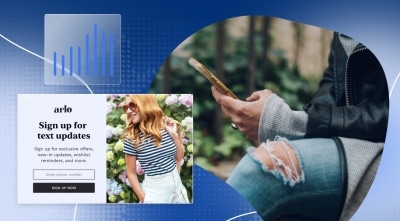Marketing
How Agile Marketing Can Help You Disrupt Your Business Before Someone Else Does
August 23, 2016

We all know that disruption is happening faster than ever — but Shar VanBoskirk brought home the magnitude of that change, and the implications, in her recent keynote address at Sailthru Lift.
VanBoskirk, a vice president and principal analyst with Forrester, began with some simple facts about Henry Ford-–the most salient being that he started his company in 1903, and by 1940, he had put out of business 183 of the 200 original OEMs that were in business at the beginning of the century.
Then she turned to Mark Zuckerberg, who started Facebook in 2004. In 2012, Facebook had the eighth-largest initial public offering in history, and it now has 1.5 billion consumer.
Both Ford and Zuckerberg led impressive, disruptive companies. The difference: It took Ford 40 years. It took Zuckerberg 10.
Innovation today, said Van Boskirk, happens at about one-tenth the cost it used to; a 13-year old can build an app for $99 by using Apple’s SDK. As a result, she says, “You can expect to face digital disruption from ten times the number of innovators you are set up to accommodate.”
That’s why savvy organizations start to disrupt themselves before a competitor can do it. Email, said VanBoskirk, is a great place to get the disruption started. VanBoskirk suggested beginning with the four rules of agile software development, and adapting them to marketing innovation.
1. Interactions override processes.
In agile development, this means that actually doing something is more important than planning to do it.
If we apply this to the world of marketing, we learn that everything is a point of interaction, and every action can be a place for innovation. That means, said VanBoskirk, that marketers should look for the places where the customer is already interacting with the brand, and concentrate on those as places where innovation might happen.
2. Trial developments are better than blueprints.
Instead of just designing something, throw something out there and see how it works. It’s easy to see how this applies to marketing: launch quickly, then test to improve.
3. Stakeholders contribute to development.
In software development, that means that the business side and the information technology side work together to meet everyone’s needs.
For marketers, this can be interpreted as collaborate with internal and external advocates. VanBoskirk said Citreon has done this well, asking customers how they’d like their ideal car built, and using that input to crowdsource a car.
4. Development happens continually.
In software, development is an iterative process, as the product is constantly refined and improved. Marketers can read this as adjust based on market conditions.
VanBoskirk thinks there’s ample room for innovation in email, especially given that it represents a place the customer and the brand are already interacting. She called out two particular opportunities:
Consumer Need vs. Business Goals
Too much marketing email, says VanBoskirk, does a lousy job of balancing these two things. Most marketing email, said VanBoskirk, puts too much emphasis on business goals, at the expense of fulfilling user needs.
Context
VanBoskirk said one of the big reasons so many email and CRM programs fail is because they don’t account for the context of the user. More email, she says, should be like triggered email, which tends to perform well. That email responds to a situation in the moment that it’s relevant to the customer. Intercontinental Hotels uses real-time weather info to populate the forecast for cities you’re going to be traveling to. Capital One, that, when it mails you a new credit card, also provides a list of everywhere you’re going to have to update that number.
There are plenty of opportunities for similar innovation, said VanBoskirk, but companies tend to be too timid to address them. “I want to encourage you to challenge the conventional thinking in your firm,” VanBoskirk said in closing. “I don’t mean here to tear the fabric of your brand, but I do mean to use your customer knowledge to push the boundaries of what you think your business can do.”
To start taking your email marketing to the next level, download this Forrester email innovation report, and watch the full video of the keynote below!
The State of Brand Loyalty in the U.S. in 2023
Related



